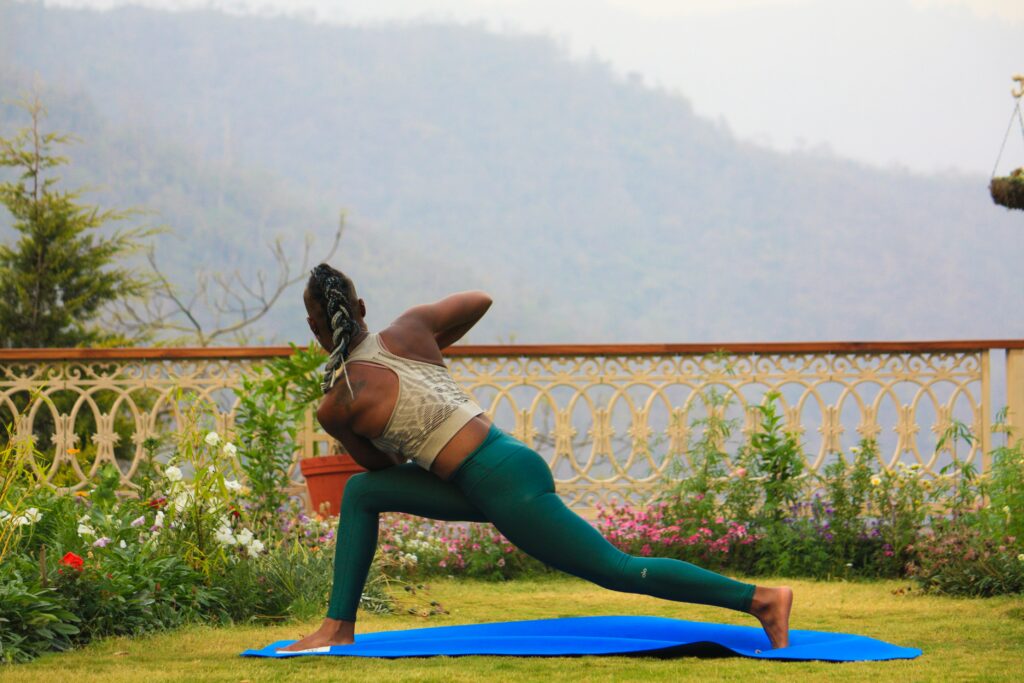Yoga is now has extended the meaning of the way it is looked. Aspiring to live thousands of lives not only in the country that discovered it but worldwide. Yoga and its practices have showcased several benefits in treating thousands of illnesses. Yoga for losing weight for beginners can give a life-changing experience and help cure your illness.
But we have heard the notion so many times that Yoga is a low process. Results in Yoga are confirmed, but according to prevalent myths, it takes time. So, the query that raises concern here is about:
“How much time will it take to lose weight with yoga for beginners?”
To answer the question, we have to understand Yoga and its function.
The Yoga we all know is a process of cleansing and healing your soul and body fitness. Now how does it function?
Yoga classes for beginners: To Make You Stronger
The Department of Health and Human Services (HHS) advises strength-training all major muscle groups twice weekly for optimal health in its physical activity guidelines for Americans.
A milder and more restorative yoga will not necessarily count against that quota. If you want the sleek muscles of a toned “yoga body,” more complicated kinds of Yoga that stress strength-building positions will help you get there.
While isometric exercises will not increase your speed or athletic performance — another reason to augment your yoga practice with other training methods — they can improve joint stability, according to the Mayo Clinic. The more stable you are, the better your joints will stay in place during regular tasks and exercise. This can aid in the prevention of pain and damage.
However, to experience strength improvements, you must once again pay your dues. “Yoga, like any program, takes four to eight weeks to produce substantial benefits if you practice three days a week,” Warloski explains. “I’ve had yoga customers tell me that they feel looser after a few courses, but it takes time to show strength advantages truly.”
According to Meggan Berg, CPT, a personal trainer and yoga instructor at Life Time, other outstanding strength-building yoga postures are:
- Plank,
- Chaturanga (yoga push-up)
- Navasana (boat pose)
- Utkatasana (chair pose)
- Utthita Parsvakonasana (stretched side angle)
- Any of the three warriors pose.
Yoga classes for beginners: To Achieve Flexibility
One of the primary benefits of Yoga, in addition to stress reduction, is flexibility. Many yoga positions stretch and increase your range of motion. Yoga can help you enhance your flexibility with time and frequent practice.
How long will it take? By the conclusion of a single session, you should feel more limber. However, it may take some time to see long-term increases in flexibility: “I’d say about eight weeks,” says Stephanie Thomas, CPT, a certified personal trainer, and yoga instructor.
If you want to be more flexible, she recommends doing at least four 20-minute yoga sessions each week. And while all types of Yoga will improve flexibility, Thomas likes ” Yin yoga “because it encourages you to hold poses for extended periods.
- Parsvottanasana (Intenside Stretch)
- Janu Sirasana (Head to Knee)
- Bilitasana Marjaryasna (Cat-Cow)
- Anjaneyasana (Low Lunge)
Yoga classes for beginners: To Train To Balance
If you prefer softer restorative types of Yoga, consider combining them with other exercises to reap the full advantages of strength training.
Consider going to the gym and completing weight-training circuits. Try a boot camp class or look at how suspension training may use your body weight as a strength-training tool, similar to how it is used in more difficult yoga programs.
Strength training is worth the additional work since the various advantages of weight training include not just stronger muscles but also more robust bones, reduced symptoms of many chronic illnesses, higher quality of life, and even greater cognition.
One simple technique to include Yoga with strength training is to add yoga practice at the start and conclusion of a strength workout. Faster-paced pre-workout yoga practice may help you warm up your muscles, while a leisurely, stretching post-workout routine allows you to chill down before continuing your day.
Berg recommends keeping your yoga sessions brief if you do them before or after a workout. If you currently perform a different activity, a 10- to 15-minute regimen may be more feasible. If you need extra practice time, you can easily extend it.
Here are common poses that help in building balances:
- Tadasana (Mountain pose)
- Vrksasana (Tree Pose)
- Utkatasana (Chair Pose)
- Garudasana (Lunge Eagle Pose)
Now when we are aware of the functionality of Yoga, we can analyze how much time it takes to show the result. There are so many online yoga classes in India from which you can take assistance to perform such type of Yoga.
Yoga and its results are visible easily from 6-12 weeks. So, this says that Yoga being time-consuming is a myth. Yoga heals and treats the root cause, and the conventional method involved in Yoga maintains the time frame. So, Yoga is not time-consuming, but there are certain things that you should keep in mind.
Is yoga time-consuming?
Here are some factors that help you in the best physical fitness Routine:
- Discipline
- Consistency
- Patience
- Dedication
- Self-Control
In a nutshell, Yoga is the ultimate solution for all your physical and mental problems.






